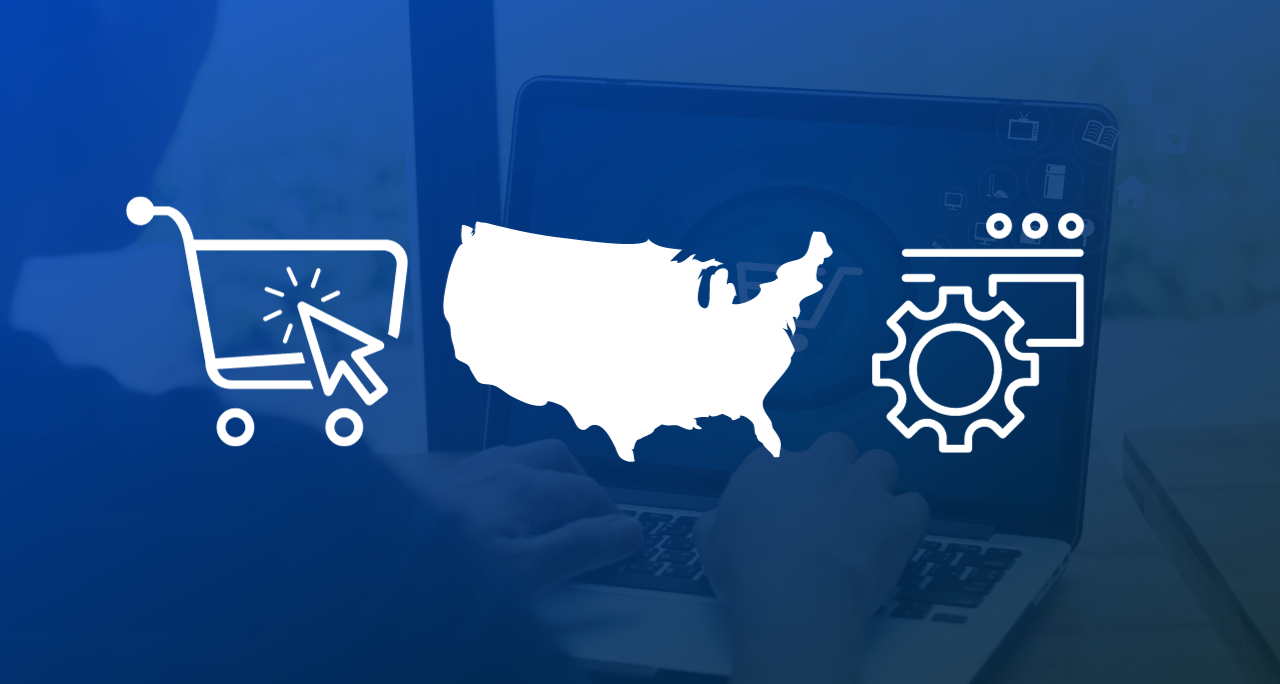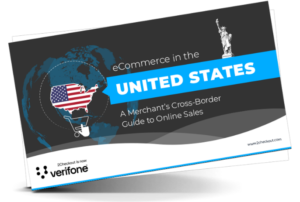The United States is a powerhouse in the world of eCommerce, offering a vast and diverse marketplace for online sellers. With its strong economy, tech-savvy population, and a growing preference for online shopping, the U.S. remains a lucrative destination for both B2C and B2B eCommerce ventures. However, success in this market comes with its unique set of challenges, including stiff competition from local giants like Amazon, Walmart, and Target, complex tax regulations, and evolving consumer preferences.
In this guide, we will investigate the key aspects of eCommerce in the United States and provide valuable insights for cross-border sellers looking to tap into this market.
The U.S. has the 12-highest disposable income in the world.
34% of American online consumers shop across borders, with 3% of all eCommerce transactions from foreign merchants .

Understanding the U.S. eCommerce Landscape
1. The Growth Trajectory
Despite facing economic challenges such as inflation and global economic downturns, the U.S. economy has shown resilience. In late 2022, it returned to positive growth, and it’s projected to maintain a moderate pre-COVID growth rate of 1.8% through 2033. This economic recovery has led to an increase in disposable income, which combined with a pandemic-driven increase in digital commerce is driving more Americans to shift their shopping habits online. In this environment, the U.S. remains an attractive market for eCommerce businesses.
3 out of 4 U.S. shoppers (74%) made an online purchase in 2022 .
2. The Size and Potential
The U.S. boasts one of the world’s highest disposable incomes, making it a lucrative market for cross-border sellers. Currently, the country has over 300 million internet users, representing 92% of its population. This large and digitally connected consumer base makes the U.S. the third-largest pool of potential shoppers globally, trailing only China and India.
In 2021, the U.S.’s digital economy produced $3.70 trillion, up from $3.30 trillion in 2020 .
3. The Rise of Mobile Commerce
Mobile commerce (mCommerce) is on the rise in the U.S., driven by factors like the COVID-19 pandemic and the popularity of social commerce. In 2022, mobile shoppers spent $387 billion, with analysts predicting annual growth rates of over 20%. This trend suggests that mCommerce could surpass desktop eCommerce in the next 5 to 10 years, emphasizing the importance of optimizing your eCommerce website for mobile devices.
Navigating the U.S. eCommerce Market

1. Understanding Shopper Preferences
U.S. shoppers have high expectations when it comes to online shopping. They value fast delivery, a wide range of product choices, frictionless checkout experiences, and excellent customer service. Keeping up with these expectations is crucial for success in the U.S. market. Additionally, it’s essential to stay updated with emerging trends like social commerce, ‘buy now, pay later,’ and new marketplaces in order to adapt to changing consumer behavior.
2. The Influence of Price
Economic insecurity and high inflation have made U.S. consumers more price-conscious. They are willing to trade fast delivery for lower prices, making budget-friendly outlets more attractive. Cross-border sellers should consider competitive pricing strategies to gain market share.
3. Social and Live Commerce
While social commerce in the U.S. may not rival China’s market, it has experienced significant growth, especially among Gen Z and millennials. A growing number of consumers are making purchases through social channels, making it important for eCommerce businesses to have a presence on social media platforms and engage with customers effectively.
60% of Gen Z shoppers use Instagram to research new brands, products, and services .
4. B2B eCommerce
The digital B2B sector in the U.S. is substantial, with wholesalers, distributors, and retailers transitioning to online channels. Retail B2B eCommerce is on the rise, projected to reach $1.8 trillion by 2023. With more businesses buying and selling online, it’s a market ripe with opportunities for cross-border sellers.
The Software Market

The United States has the world’s largest software market, and it has witnessed robust growth since 2016. While enterprise software aims to generate around $130.1 billion (USD) in revenue by 2026, the U.S. software market provides opportunities for software vendors of all sizes due to its robust productivity software segment.
The maturity of the U.S. market is reflected in its diverse online consumer offerings. While Americans shop across various categories, a substantial portion of online spending is concentrated in specific areas:
- Food and Personal Care: 27.3%
- Toys, Hobby, and DIY: 25.6%
- Fashion: 20.5%
- Furniture and Appliances: 13.4%
- Electronics and Media: 13.2%
This data highlights the immense size and diversity of the U.S. software market, making it an attractive destination for software companies of all types and sizes.
The U.S.’s software market is expected to reach more than $388B (US) by 2026.
The State of Subscriptions
The subscription economy is booming in the United States, which hosts a staggering 17,000 SaaS companies. This surge has resulted in an abundance of subscription-based products and services, offering consumers and businesses a wide range of choices.
Key areas of growth include video streaming services (SVOD), generating $30.31 billion in revenue with nearly 70% of U.S. consumers subscribing to three or more services. Additionally, eCommerce subscription products and services have seen significant growth, totaling $38.2 billion, driven by a preference for convenience and enjoyment over cost savings.
In 2022, a survey revealed that 65% of consumers subscribed to new services for the pleasure and convenience they offer, while only 20% mentioned cost savings. Amazon’s “Subscribe & Save” program leads the way with 21 million subscribers, but competition is growing as providers focus on enhancing the customer experience and reducing friction in the subscription process.
65% of new US subscribers seek enjoyment and enhanced convenience .
Selling Online in the United States: Key Considerations

1. Payment Method Preferences
In the U.S., credit and debit cards remain the dominant eCommerce payment methods, accounting for 36% of transactions. However, alternative methods like digital wallets are gaining ground, driven by increasing demand for real-time payments. To cater to diverse preferences, sellers should offer a range of payment options, including major card issuers and popular digital wallets.
2. The Cart and Checkout Experience
The preference for local marketplaces and merchants with a physical presence can pose challenges for cross-border sellers. To succeed, it’s crucial to provide a seamless shopping experience, including localized language, currency, and social proof. Testing and optimizing the cart flow can also enhance conversion rates.
According to our platform data, 96% of shoppers have their browsers configured for English .
Privacy and Taxation

In the United States, privacy concerns are gaining attention, with federal efforts like the American Data Privacy Protection Act in progress. Some states, including California, Virginia, and Colorado, are implementing GDPR-like privacy laws. The absence of standardized national regulations, however, poses challenges for businesses, particularly regarding sales tax. The U.S. lacks a unified approach, leaving tax policies to be determined by over 12,000 separate jurisdictions either requiring or exempting sales taxes on digital goods and services.
Get a primer on taxation for digital goods sales in different U.S. states from our eBook, Taxation for digital goods in North America.
Getting Started in the U.S. eCommerce Market
While the United States presents significant opportunities for eCommerce businesses, it also poses unique challenges. Understanding shopper preferences, staying updated with market trends, and addressing payment, localization, and regulatory considerations are key to achieving success in this dynamic and competitive market. With the right strategies and tools in place, cross-border sellers can master eCommerce in the United States and thrive in this lucrative marketplace.
For cross-border sellers looking to tap into the U.S. eCommerce market, leveraging a comprehensive monetization platform like 2Checkout (now Verifone) can simplify the complexities of modern commerce.
Learn more by downloading a free copy of our merchant’s cross-border guide on how to effectively venture into the online market within the United States.






